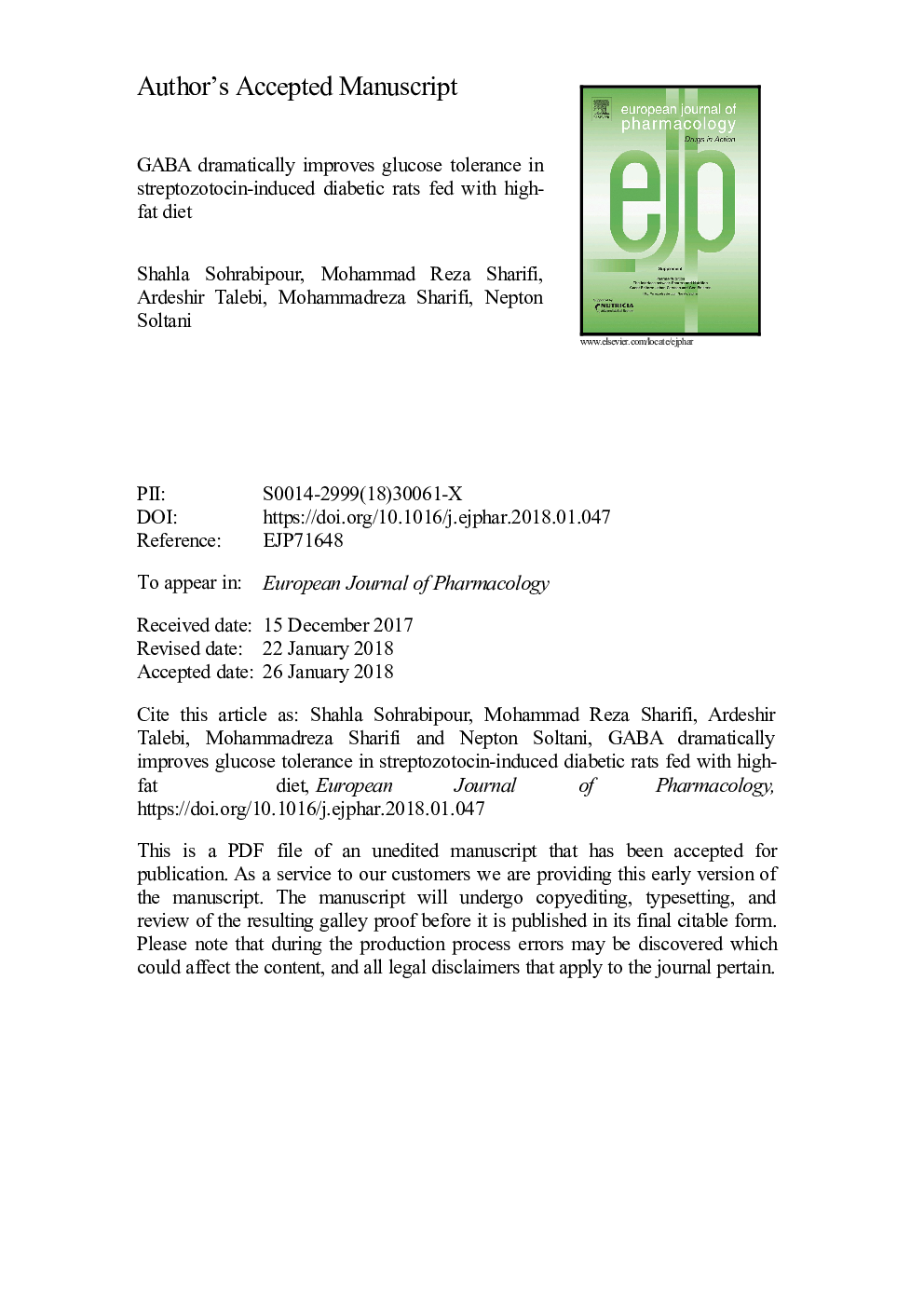| Article ID | Journal | Published Year | Pages | File Type |
|---|---|---|---|---|
| 8529193 | European Journal of Pharmacology | 2018 | 34 Pages |
Abstract
Skeletal muscle, hepatic insulin resistance, and beta cell dysfunction are the characteristic pathophysiological features of type 2 diabetes mellitus. GABA has an important role in pancreatic islet cells. The present study attempted to clarify the possible mechanism of GABA to improve glucose tolerance in a model of type 2 diabetes mellitus in rats. Fifty Wistar rats were divided into five groups: NDC that was fed the normal diet, CD which received a high-fat diet with streptozotocin, CD-GABA animals that received GABA via intraperitoneal injection, plus CD-Ins1 and CD-Ins2 groups which were treated with low and high doses of insulin, respectively. Body weight and blood glucose were measured weekly. Intraperitoneal glucose tolerance test (IPGTT), insulin tolerance test (ITT), urine volume, amount of water drinking, and food intake assessments were performed monthly. The hyperinsulinemic euglycemic clamp was done for assessing insulin resistance. Plasma insulin and glucagon were measured. Abdominal fat was measured. Glucagon receptor, Glucose 6 phosphatase, Phosphoenolpyruvate carboxykinase genes expression were evaluated in liver and Glucose transporter 4 (GLUT4) genes expression and protein translocation were evaluated in the muscle. GABA or insulin therapy improved blood glucose, insulin level, IPGTT, ITT, gluconeogenesis pathway, Glucagon receptor, body weight and body fat in diabetic rats. GLUT4 gene and protein expression increased. GABA whose beneficial effect was comparable to that of insulin, also increased glucose infusion rate during an euglycemic clamp. GABA could improve insulin resistance via rising GLUT4 and also decreasing the gluconeogenesis pathway and Glucagon receptor gene expression.
Keywords
Related Topics
Life Sciences
Neuroscience
Cellular and Molecular Neuroscience
Authors
Shahla Sohrabipour, Mohammad Reza Sharifi, Ardeshir Talebi, Mohammadreza Sharifi, Nepton Soltani,
